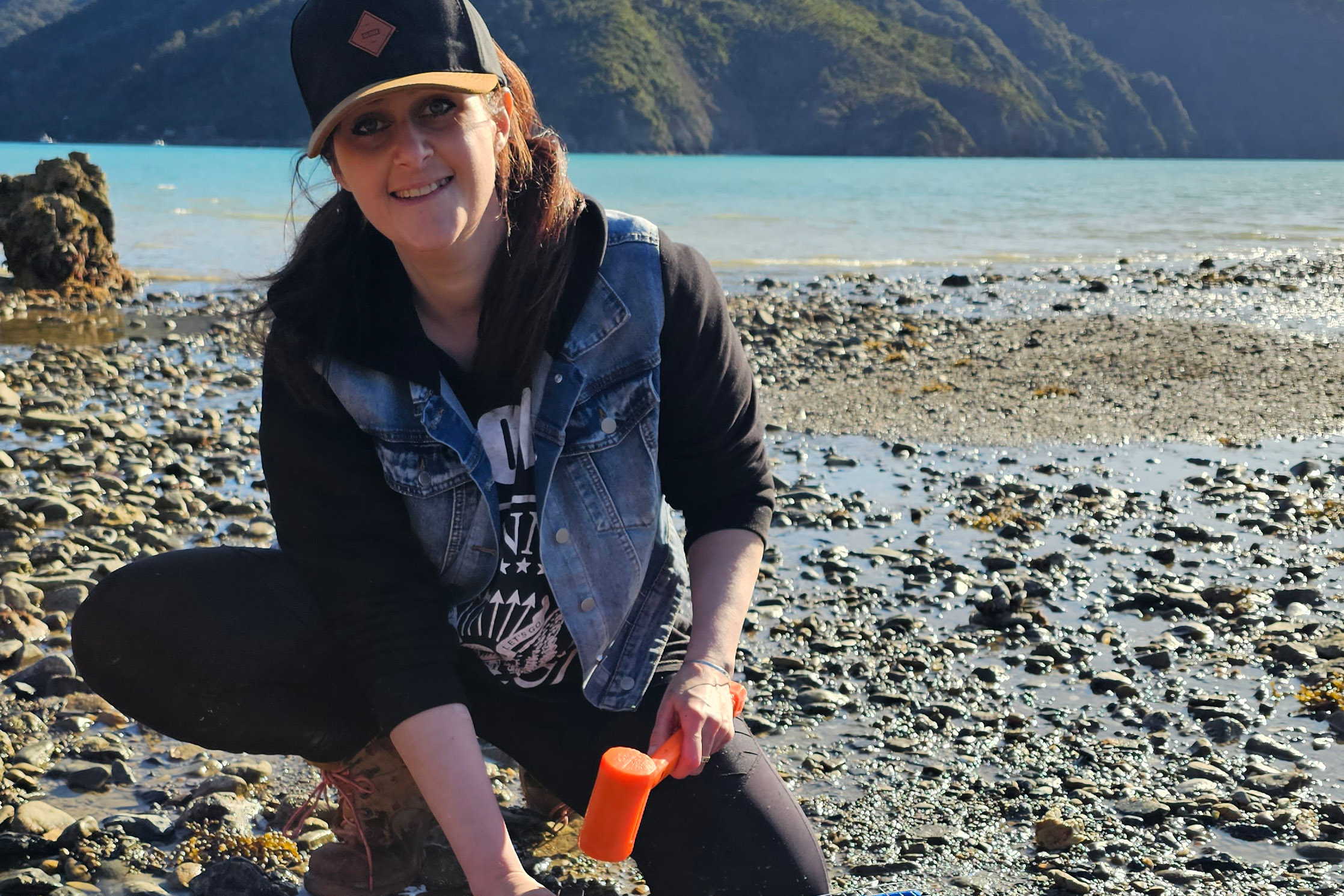Caging waves: restoring intertidal mussel beds

Her field experiment near Okiwi Bay was aimed at helping greenshell mussels (supplied by Sanford Ltd) establish in the intertidal zone – the area where the ocean meets the land between high and low tides.
Ash worked where there was increased wave activity on the shore. She set up 3D-printed cages that housed the mussels to prevent them from being thrown about too much. This was done over different lengths of time, and the results were recorded.
Ash’s project was designed and run in collaboration with Emilee Benjamin from the University of Auckland as part of the Bachelor in Aquaculture and Marine Conservation(external link) at NMIT Te Pūkenga. Emilee has been involved in mussel reef restoration in the Marlborough Sounds for several years.
Ash’s project has provided clear and robust evidence that shows cages allow mussels to settle successfully.
“My project has been immensely rewarding, despite the numerous challenges associated with it,” Ash says.
“Overcoming those hurdles and seeing the positive result is great not only for me personally but also for the environment.”
Using their bundle of filaments, or byssus threads, mussels need time to create links to the substrate and clump up, allowing them to be strongly attached even under challenging conditions. This is key for self-sustaining populations to thrive again.
These mussel reefs provide food and habitat for a range of species, promoting local biodiversity.
She hopes her research will be used on a bigger scale in the future, allowing intertidal mussels to stick to the substrate and provide food and shelter for others – all with just a bit of help from a cage.
The majority of New Zealand’s aquaculture produce is grown in Te Tauihu (the Top of the South), and the region is also the country’s research hub.
At NMIT Te Pūkenga, we offer world-class aquaculture programmes at Certificate, Bachelor, and Postgraduate levels.
Our programmes are designed with industry to ensure graduates have the right blend of knowledge and skills to transition seamlessly into the workforce. For more information, visit our website(external link).

